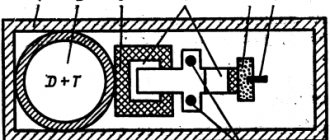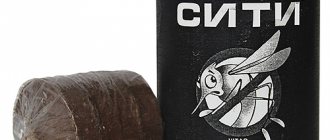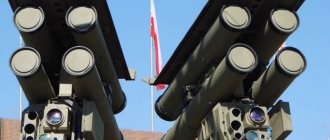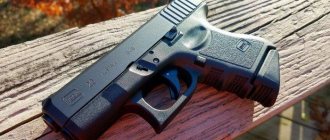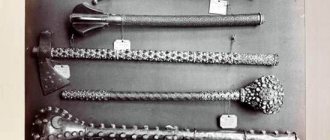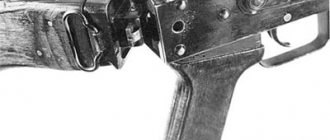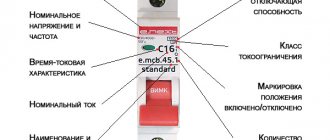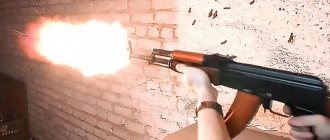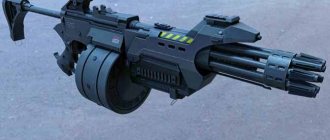Climbing carabiners (types of which are used not only in mountaineering, but also in tourism, rock climbing and performing various works at height) are metal “rings” with a latch that is attached to rope belays.
The term “carbine” first appeared in the 17th century - this was the name of the hook on which the weapon of the same name was held. For a long period, carbines were made exclusively from steel, and coupling designs began to be used only 50 years ago. Modern carbines are made from different materials, they have different types of latches and, accordingly, differ in purpose.
Types of carabiners by material
The strength and reliability of a carbine depends almost entirely on the material from which it is made. To ensure maximum durability of the product depending on the needs of the climber, steel, aluminum, titanium and plastic carabiners are available on the market.
Steel carabiners
- the most reliable ones presented in the store today. To ensure their products are resistant to corrosion, manufacturers often coat the carabiners with chrome, galvanize them, or add powder paint. And although steel fasteners have increased strength, they also have a lot of weight. Most often they are used in industrial mountaineering or for work at heights.
Aluminum (or, as they are also called, duralumin) carbines
- This is the most universal option. With the same dimensions as steel structures, they are 2-3 times lighter, which is a big plus. The right strength-to-weight ratio allows these carabiners to be used almost everywhere: in mountaineering, in rescue work and as stationary attachment points.
Titanium products are considered obsolete.
Today they are practically not produced, but sometimes they can still be found in everyday life. Titanium carabiners are lighter than steel ones and, at the same time, much more reliable than aluminum ones. But for all its advantages, titanium does not conduct heat well, which can cause the carbine to lose its strength when the rope rubs. And the price of titanium carbines, as a rule, is several times higher than the cost of steel models.
Plastic is used as the main material in the manufacture of auxiliary carabiners - karituls.
They cannot be used as a rope connector, but are great for hanging climbing equipment.
Features of SCS
The carbine clip has ten rounds.
It is not advisable to consider the Simonov carbine or SKS-45 on a par with modern hunting weapons. It is enough to disassemble the carbine to understand how outdated it is. The fact is that all parts are made by hand on a milling machine. From the point of view of manual labor and the precision of milling work, the SKS-45 really deserves respect, but this manufacturing technology largely explains why in military affairs preference was still given to the AK, which is an order of magnitude more technologically advanced.
Externally, Simonov's carbine is very recognizable. Despite the fact that the weapon was developed for arming the army, it has a truly “hunting” grip, fits comfortably in the hand and allows you to take good aim from a standing position. At the same time, the scope is not suitable for offhand shooting, so a good grip and comfortable position in the hand are of utmost importance for this carbine, because it takes a long time to aim.
Despite its rather clumsy appearance, Simonov's carbine is very recognizable. It can often be found in various computer games, films, and videos.
Weapons such as the Simonov carbine or SKS originally used military-grade cartridges with high breaking force. From the point of view of hunting ethics, such cartridges are of little use for hunting.
Design and technical characteristics
The rifle hits a target at a distance of up to 1.5 kilometers.
The Simonov carbine is a semi-automatic rifle with a short barrel that works on the principle of removing powder gases. Gases exit through a tube located under the barrel; this principle is also implemented in the AK.
The bolt is located in the bolt frame and is connected to it by protrusions. During a shot, gases penetrate into the chamber through special holes, the piston is thrown back, hitting the front part of the bolt frame and also throwing it back. At this time, the shutter section rises, it is unlocked, the cartridge case is removed and the hammer is cocked.
The SKS magazine is integral. It is equipped with a clip of 10 rounds, or one round each. To quickly remove cartridges from the magazine, a special mechanism is provided (a latch in the rear of the magazine). By pressing the latch, the magazine lowers and opens, and the cartridges fall into the extended hand.
The stock and upper receiver of the carbine are made of wood. The sight is a sighting bar with a clamp on it, which raises or lowers this bar when moving, thereby allowing you to set the sight in the desired position.
In general, the target firing range of the SKS is from 800 to 1000 m. The lethal effect of the bullet is maintained at a distance of up to 1500 meters.
Rifle specifications:
- barrel length 520 mm;
- cartridge M43 (7.62x39);
- total length 1020 mm;
- weight 3.75 or 3.9 kg (without cartridges and with cartridges);
- operating principle: removal of powder gases;
- 10-round magazine;
- sector sight;
- initial bullet speed 730 m/s.
In general, the exact characteristics depend on the modification of the rifle.
Options for carbines based on SKS-45
The SKS-36 Lancaster carbine can be used for hunting small game.
The SKS-45 is originally a military weapon. Several variations of rifles based on the Simonov carbine were developed especially for hunters:
- OP-SKS;
- T03-97 “Argali”;
- VPO-208;
- SKS-36 “Lancaster”.
OP-SKS (OP – hunting and commercial) and T03-97 “Argali” are distinguished by their low price and ease of operation, but they use the same cartridge as the SKS-45. A cartridge of this caliber is not ideal for hunters, as it does not allow hitting small and fast game. This problem has been solved in VPO-208 and SKS-36 Lancaster. Both rifles are smoothbore weapons based on the SKS-45, and are chambered for the .366 TKM cartridge.
Since there are many combat SKS-45s left in circulation, there are a number of enterprises in the Russian Federation, Ukraine and Belarus that are converting these carbines into OP-SKS or Arhar hunting rifles.
Fans and collectors can pay attention to Simonov SHP carbines. This is a cooled variation of the SKS-45 rifle. The SHP fully corresponds to the combat SKS, but fires blank cartridges. You can purchase a Simonov SHP rifle or carbine to decorate your home or for your own collection; permission and documents for a rifle of this type are not required. At first glance, cold SKS-SHP rifles are indistinguishable from military weapons.
Types of bullets for SKS
The SKS is made specifically for the 1943 model cartridge. Shooting can be carried out with the following types of bullets:
- ordinary with a steel core;
- tracers;
- armor-piercing incendiary;
- incendiary;
- hunting
Ordinary and tracer bullets are designed to hit a living target. Tracer bullets are painted green and are also used for target designation. Range – up to 800 m.
Armor-piercing incendiary bullets are used at ranges of up to 300 meters. Used to ignite flammable compounds. These bullets are painted black and have a red stripe at the top.
Incendiary bullets are used to ignite flammable mixtures at a distance of up to 700 meters, provided that the mixture is placed in a tank whose wall thickness does not exceed 3 mm. Color – red.
Special hunting bullets for SKS-45 are intended for hunting and target practice.
Advantages and disadvantages of the rifle
The Simonov self-loading carbine is more suitable for professional hunters than for amateur beginners.
The main advantages of the Simonov carbine are as follows:
- affordable price;
- ease of operation;
- good firing range;
- convenient sight;
- availability of ammunition.
The main disadvantage of this weapon is that the cartridge is not entirely suitable for hunting.
Initially, the SKS-45 was produced as a combat carbine, which was supposed to come to the Second World War, but its production was delayed by several years. The cartridge for which the SKS was developed is designed to hit targets weighing up to 80 kg, which causes serious problems in hunting. It is difficult to hit large prey with this cartridge. Only experienced shooters can hit an elk, wild boar or roe deer with this cartridge with one shot. Amateur hunters often fire several cartridges, or even the entire clip, at the animal, as a result the animal still leaves (sometimes several kilometers), bleeding along the way. For small prey, such as game, the SKS is inconvenient. At a short distance it is almost impossible to hit a bird without scaring it off, but at a long distance there is a high chance of getting wounded.
Thus, despite all the advantages, the SKS can only be recommended to experienced hunters who can hit their prey with one shot. Good alternatives are VPO-208 and SKS-36 Lancaster, but they have their drawbacks and are more expensive.
Carabiners by shape and size
In mountaineering, various forms and types of carbines are used, but several key ones can be identified:
- Oval carabiners.
Due to their symmetry, they have the lowest risk of creating kinks and distortions under load. You can also note the lack of friction on the block rollers. - Trapezoidal carabiners.
This is one of the most popular forms of mountaineering bindings. The main advantage is the uniform distribution of the load throughout the structure, which, in turn, provides good strength. Widely used for heavy lifting, rigging and to add to belays. - Pear-shaped carabiners.
The model of pear-shaped carabiners was invented specifically for use with a UIAA type knot. Thanks to its pear-shaped design, the rope glides safely through the carabiner. An important point: several equipment mounts can be attached to such a carbine, so it is often used at stations as the main carabiner. - Rapids.
This is the name for connecting links without a latch with couplings. The coupling in this system serves as a connecting element, which, after twisting, turns the carabiner into a solid structure. Thus, the load can go in any direction. This model is often used in safety systems. - Pipe carabiners.
They are used exclusively for belaying and cannot be used under dynamic loads or jerks.
Device[ | ]
The carbine consists of the following parts and mechanisms[3]:
- Barrel with receiver, bayonet and sights
- receiver cover
- gate
- return mechanism
- gas tube with barrel lining
- gas piston
- pusher with spring
- firing mechanism
- shop
- box.
A clip is used to quickly fill the integral 10-round magazine. To use the clip, there are special guides on the bolt frame. When the cartridges are used up, when the magazine is empty, after the last shot, the bolt goes into a slide stop, which reduces the time for subsequent replenishment of the magazine with cartridges. Due to the increasing resistance of the spring and the excessive length of the curvature of the clip, clip loading requires certain skills, otherwise a delay may occur on the eighth cartridge. The cartridges should be pressed in, pressing as close to the clip as possible, and make sure that it does not bend forward.
SKS sights consist of a sight and a front sight. The sight, in turn, consists of a sight block with a leaf spring, an aiming bar and a clamp with latches and springs. The sight block has two sectors to give the aiming bar a certain height. On the bar there is a scale with divisions from 1 to 10 (indicating the firing range in hundreds of meters) and the letter “P” (permanent sight setting, corresponding to sight 3)[3].
The bayonet is a bladed, permanently folding one, consisting of a blade with a base and a tube with a spring (providing shock absorption of the bayonet for uniform SKS combat, regardless of the position of the bayonet). Some early carbines had a needle bayonet.[3]
The carbine kit includes: accessories (cleaning rod, cleaning rod, brush, drift, pencil case and oil can), belt, cartridge bags and clips[3].
Reloading of the SKS after the next shot is carried out automatically, for which the energy of the powder gases removed from the barrel is used. The barrel bore is locked by tilting the bolt downwards. On early samples the barrel was black-forged, since 1952 it was chrome-plated.
The gas piston is made separately, has a short stroke, and is returned to the reverse position by a pusher, which has a spring
Operating principle of automation[ | ]
Main article: Removal of powder gases
At the moment of firing, when the bullet passes through the barrel, powder gases under high pressure rush through a special hole in the barrel wall into the gas chamber, where they set in motion the gas piston, the pusher, and with it the bolt. The bolt, in turn, opens the barrel, compresses the return spring and cocks the hammer. In this case, the cartridge case is removed from the chamber and thrown out.
Next, the bolt, under the action of the return mechanism, returns forward, sending a new cartridge into the chamber and closing the barrel bore. The side face of the bolt frame rests against the combat stop, and the locking protrusion of the bolt stem holds the bolt frame in this position. After this, to fire, you must release the trigger and press it again.
When the last cartridge is fired, the bolt will rest on the bolt frame and will not move further, which is a signal to the shooter about the need to reload[3].
Disassembly, assembly and maintenance[ | ]
Partial disassembly of the SCS is carried out for cleaning, lubrication and inspection in the following order[3]:
- removing the pencil case with accessories from the butt;
- cleaning rod compartment;
- separation of the receiver cover;
- removing the return mechanism;
- removing the shutter;
- separation of the frame from the bolt stem;
- separation of the gas tube with the barrel lining.
Reassembly after partial disassembly is carried out in the reverse order.
Complete disassembly of the SCS is carried out for cleaning in case of heavy contamination, after exposure to rain or snow, when switching to a new lubricant and repair in the following order [3]:
- incomplete disassembly;
- removing the pusher with the spring;
- firing mechanism compartment;
- store branch;
- separation of the barrel with the receiver from the stock;
- disassembling the trigger mechanism;
- disassembling the return mechanism;
- separation of the firing pin and ejector from the bolt body.
Reassembly after complete disassembly is carried out in the reverse order.
It is recommended to use gun lubricant and alkaline composition (to remove powder deposits) in summer (at temperatures above 5 °C), and in winter (from +5 °C to −50 °C) to use liquid gun lubricant (for lubrication and removal of deposits) , carefully removing (by washing all metal parts in kerosene or liquid gun lubricant, thoroughly wiping with a rag or tow, then rinsing again and wiping with a clean rag) before doing this the summer lubricant. For long-term storage in a warehouse, the carbine is generously lubricated with a mixture of 50% gun lube and 50% gun lube by dipping the cleaned metal parts twice into baths of hot lube[3].
Non-standard types of carabiners for mountaineering
It is also worth noting separately the types of carbines that have a unique design.
- For example, carabiners with a roller are often used.
Among the advantages of this model: reduced friction of the rope on the carabiner itself. Thanks to this solution, you can easily change the direction of movement of the rope or assemble pulley systems. - A carabiner with a latch that opens in different directions.
This design does not require a locking element. - Carabiners without coupling.
It is very easy to snap and release the rope through this structure, but it can only be used in combination with a top or bottom belay system. - Carabiners for via ferrata.
These are triangle-shaped designs with a large automatic clutch. They are used on routes specially equipped with cables or rods for belaying, when a wide opening of the shackle is necessary. Often used in conjunction with sewn insurance.
Characteristics of the Simonov Self-Loading Carbine (SKS)
| A country: | USSR |
| Type: | Self-loading carbine |
| Date of issue: | 1949 |
| Caliber: | 7.62 mm |
| Length: | with bayonet in combat position: 1260 mm, in stowed position: 1020 mm, barrel length: 520 mm |
| Weight: | 3.9 kg (curb) |
| Rate of fire: | up to 40 rounds per minute |
| Initial bullet speed: | 735 m/s, effective range: 400 m, bullet flight: 3.6 km |
| Ammunition: | 10 rounds 7.62×39 mm |
“Simonov self-loading carbine - capabilities, history of creation, design features and modifications”
Operating countries[ | ]
Countries that use/used the Simonov self-loading carbine.
- British colony of Aden[16][17]
- Albania[17], in 1962, with technical assistance from the People's Republic of China, production was mastered[18]
- Algeria[17]
- Angola[17]
- Afghanistan[17]
- Bangladesh[17]
- Benin[17]
- Bulgaria[17]
- GDR[17] Produced under license under the symbol Karabiner-S.
- Vietnam[17]
- Egypt[16][17]
- Guinea[17]
- Guinea-Bissau[17]
- Guyana[17]
- Yemen[16]
- Cambodia[17]
- Cape Verde[17]
- China[19]
- Kazakhstan is in service with paramilitary guards[20]
- DPRK[17][19]
- Comoros[17]
- Laos[17]
- Liberia[17]
- Madagascar[17]
- Mozambique[17]
- Oman[16]
- Romania[21]
- Russia - in service with the 154th separate commandant and Presidential regiments, as well as units of the Private Security Service of the Russian Guard[22] and the Departmental Security Service (VOKhR) of other ministries and departments of Russia (VOKhR ZhDT, etc.)
- Sao Tome and Principe[17]
- Seychelles[17]
- Sierra Leone[17]
- Sri Lanka[17]
- Sudan[17]
- Tanzania[17]
- Uganda[17]
- Ukraine is in service with the state security service.[23] and Navy[24]
- Equatorial Guinea[17]
- Yugoslavia - a licensed copy of Zastava M59/66 was used[17][19]
Advantages and disadvantages
Since it is the list of advantages that allows us to assess the degree of value and refinement of the model in question, below is a list of qualities of the OP SKS b/o 7.62x39 carbine, which should be considered its important advantages over other similar models.
This is interesting: Department of Civil Protection of the Khanty-Mansiysk Autonomous Okrug - Ugra
The advantages of the OP SKS b/o 7.62x39 model include its parameters:
- attractive external design, while maintaining a strict style without unnecessary details;
- the classic version of the carabiner makes it an excellent addition to the appearance of any man;
- simplicity of operation of all mechanisms;
- guaranteed duration of uninterrupted operation without breakdowns;
- ease of use, which makes it convenient for women and teenagers to use the model;
- Cleaning the carabiner is easy; all you need is a professional cleaning rod;
- With good care of the weapon, its service life increases significantly.
Many buyers called the model’s cost indicator relatively affordable, because this indicator largely has a significant impact on the degree of demand.
The disadvantage is the lack of a notch, which somewhat reduces the effectiveness of using this type of weapon when shooting in conditions of high humidity: the butt can simply slip when firing. However, almost every owner can apply the notch independently.
Carbine OP SKS b/o 7.62x39 (photo)
Notes[ | ]
- Since 1959, it was replaced in the main army units by the AKM, but remained in service with some units
- ↑ 123456
Article “OP-SKS carbine - life after demobilization” on the website kalibr.ru - ↑ 12345678910111213141516
Shooting manual. 7.62 mm Simonov self-loading carbine. 1962 - Shooting manual. 7.62 mm Simonov self-loading carbine. 1962 P. 129
- Description of the SKS on the website legendary-arms.ru (unspecified)
(inaccessible link). Retrieved September 6, 2009. Archived September 1, 2009. - Basics of fire training Archived February 10, 2012. (PDF)
- ↑ 12
"Infantry Weapon 97" - Shotgun VPO-208 SKS (English) (inaccessible link). molot.biz. Retrieved February 12, 2020. Archived February 12, 2020.
- ↑ 12
Smoothbore shotgun model SKS-366-Lancaster (Russian). molotarms.com. Retrieved February 12, 2020. - ↑ 12
About Lancaster trunks (Russian) (inaccessible link). molotarms.com. Retrieved February 12, 2020. Archived February 13, 2018. - “Difficulties on the way of the Transarctic 2006 expedition” on the website bask.ru (unspecified)
(inaccessible link). Retrieved August 4, 2009. Archived December 19, 2013. - Simonov self-loading carbine
- Weapons portal GUN.ru Expansive action hunting bullets.
- SKS - Simonov Self-Loading Carbine (undefined)
(inaccessible link). Weapons portal 9×19.su. Retrieved May 6, 2020. Archived September 14, 2020. - ↑ 1 2 3 4
Miller, David (2001).
The Illustrated Directory of 20th Century Guns
. Salamander Books Ltd. ISBN 1-84065-245-4. - ↑ 1 2 3 4 5 6 7 8 9 10
11 12 13 14 15 16 17 18 19 20 21 22 23 24 25 26 27 28 29 30 31 Jones ,
Richard D.
Jane 's Infantry Weapons 2009/2010 . Jane's Information Group; 35 edition (January 27, 2009). ISBN 978-0-7106-2869-5. - Frank Iannamico. The SKS rifle // “Small Arms Review”, December 2013
- ↑ 123
Hogg, Ian (2002). Jane's Guns Recognition Guide. Jane's Information Group. ISBN 0-00-712760-X. - Decree of the Government of the Republic of Kazakhstan No. 1060 of August 28, 1996 “On introducing amendments and additions to some decisions of the Government of the Republic of Kazakhstan”
- Peterson, Philip. Standard Catalog of Military Firearms: The Collector's Price and Reference Guide (ed. 6, ilustrată). Gun Digest Books. ISBN 978-1-4402-1451-6
- Order of the Ministry of Internal Affairs of the Russian Federation No. 651 of 07/09/2002
- Order of the Ministry of Internal Affairs of Ukraine “On the organization of civil security service activities of the State Security Service under the Ministry of Internal Affairs of Ukraine” No. 1430 dated November 25, 2003
- Navy Day in the frame: the scorching sun, the president, boats and apartments // “Dumskaya. NET" dated July 3, 2016
Development of an intermediate cartridge
What was needed was a cartridge that would be the golden mean in terms of power relative to the two existing projectiles. Several countries began to work in this direction simultaneously. The most successful were the Germans, who back in 1940 created a cartridge with a caliber of 7.92x33mm. It would later be used in the STG-44 assault rifle.
In the Soviet Union, work on an intermediate cartridge began only in 1943, after studying captured German ammunition and becoming familiar with the American M1 carbine. Soviet designers were given the task of creating a whole family of firearms for intermediate ammunition: a repeating rifle, a machine gun, a self-loading carbine and a light machine gun. In 1943, the intermediate cartridge of Elizarov and Semin, with a caliber of 7.62x39 mm, entered service with the USSR.
From military weapons to hunting weapons
When the SKS was removed from service, a completely logical question arose: what to do with the remnants? After all, about 15 million of these carbines were produced. The answer to the question was found: SKS began to be sold to hunters who have a license to purchase rifled weapons.
True, before this the weapon underwent some modification. This is how the SKS hunting carbine appeared. For example, the bayonet was removed along with the mounting bracket. In addition, the aiming bar has been significantly shortened - now it allows targeted fire at a distance of no more than 300 meters.
Fortunately, the revision was completed. After this, the weapon began to fully meet the requirements for civilian use. Reliability and ease of use have not suffered at all.
It is important that one of the main disadvantages turned out to be unimportant for hunters - the difficulty of reloading. 10 rounds in the magazine is enough to hit any prey. And you usually have to reload a weapon without haste, without your hands trembling from the heat of battle. Therefore, the SKS hunting carbine has gained considerable popularity among hunters.
On the boar
- Hunting 7.62×39 with a semi-jacketed bullet weighing 9.7 g. Such a bullet, hitting an animal, is deformed, providing a damaging effect at a distance of 100 m. A greater distance does not allow the bullet to cause shock to the wild boar, but an aimed shot from a self-loading carbine is possible up to 200 m. Increasing the distance is possible after preliminary zeroing to determine the range correction.
- Hunting 7.62×39 with a bullet weighing 8 g, consisting of 3 components - a bimetallic jacket, a lead jacket and a steel core. It is unified with the projectile of the 1943 model cartridge. Externally, the bullet can be identified by the cut of the shell at the tip, where the lead jacket is visible.
A bullet of the second type of cartridge (8 g), hitting the soft parts of the animal’s body, is deformed to the point of destruction at distances of up to 300 m. Its damaging factors are fully realized, causing the animal to go into a state of shock.
Hitting a bone with a steel core shatters it into fragments, increasing the animal's stun and shock.

